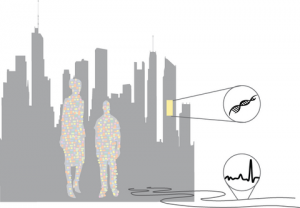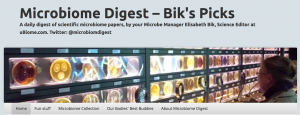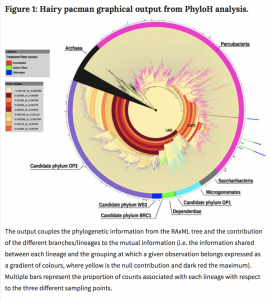Hi MoBE blog, I just wanted to share a piece that I recently wrote for a Special Issue on the journal Microbial Biotechnology. The Special issue presents a collection articles about “The contribution of microbial biotechnology to sustainable development goals”, and the title of my article is “Microbial communities as biosensors for monitoring urban …
Microbes indoors DNA metabarcoding to assess indoor fungal communities: Electrostatic dust collectors and Illumina sequencing – Steffi Rocchi – Journal of Microbiological Methods ($39.95) Our study aimed to evaluate metabarcoding and bioinformatic analysis resulting from calibrated samples and samples collected by an electrostatic dust collector (EDC) in dwellings with no moisture problems. Thus, the fungal communities of …
Got pointed to this paper by Sofia Ahsanuddin of the MetaSub project and thought it might be of interest. Source: Exploring the under-investigated “microbial dark matter” of drinking water treatment plants : Scientific Reports Abstract: Scientists recently reported the unexpected detection of unknown or poorly studied bacterial diversity in groundwater. The ability to uncover this neglected biodiversity …
Catching up after a couple of busy weeks. Microbes in the hospital Diversity changes of microbial communities into hospital surface environments – Rika Yano – Journal of Infection and Chemotherapy ($31.50) Previous works have demonstrated considerable variability in hospital cleanliness in Japan, suggesting that contamination is driven by factors that are currently poorly controlled. We undertook 16S …
Microbes indoors Building-related symptoms are linked to the in vitro toxicity of indoor dust and airborne microbial propagules in schools: A cross-sectional study – JT Salin – Environmental Research ($41.95) We examined whether the in vitro toxicity of indoor samples from school buildings was associated with work-related health symptoms (building-related symptoms, BRS). Administrators of the Helsinki …
Microbes in the house and office A survey of xerophilic Aspergillus from indoor environment, including descriptions of two new section Aspergillus species producing eurotium-like sexual states – Cobus M. Visagie – MycoKeys (OA) Xerophilic fungi grow at low water activity or low equilibrium relative humidity and are an important part of the indoor fungal …
Microbes around the house Editorial: An emerging paradox: Toward a better understanding of the potential benefits and adversity of microbe exposures in the indoor environment – J. Mensah-Attipoe – Indoor Air (OA) In order to further explore indoor microbial exposures and their associated health effects, and to help establish research agenda priorities, a two-day workshop to …
Microbes in the city Microbial Community Patterns Associated with Automated Teller Machine Keypads in New York City – Holly M. Bik – mSphere (OA). News coverage at EurekAlert, ScienceDaily, and NYMagazine. (…) Here we carried out a baseline study of automated teller machine (ATM) keypads in New York City (NYC). Our goal was to describe …
It’s been a couple of weeks since my last posts due to some work-related trips and changing jobs. Since last week, I am the new Science Editor at uBiome. So here is a longish post to catch up with papers and news articles on microbes of the Built Environment. Microbes and buildings Popular press: ‘Living buildings’ …
Studying the 5 second rule, antibiotic resistance genes in indoor dust and sewers, Legionella in the air, and water treatment. Microbes on the floor Longer Contact Times Increase Cross-Contamination of Enterobacter aerogenes from Surfaces to Food — Robyn C. Miranda — Applied and Environmental Microbiology ($25 for 1 day) Bacterial cross-contamination from surfaces to food can …



